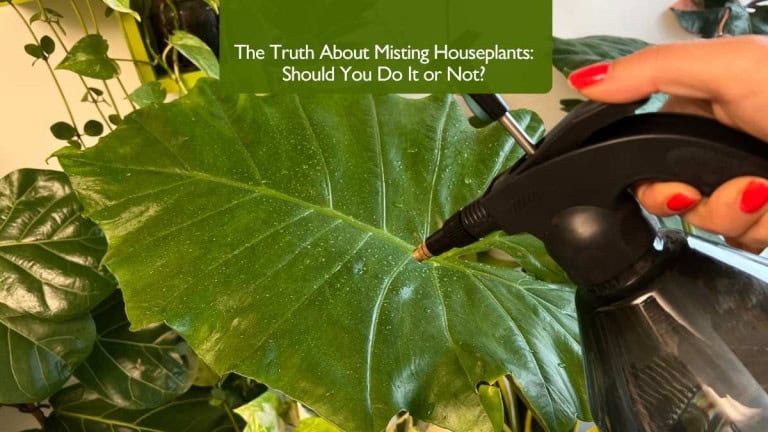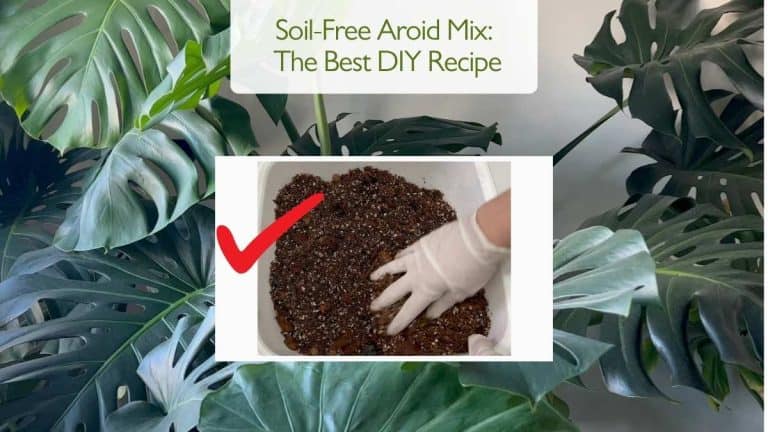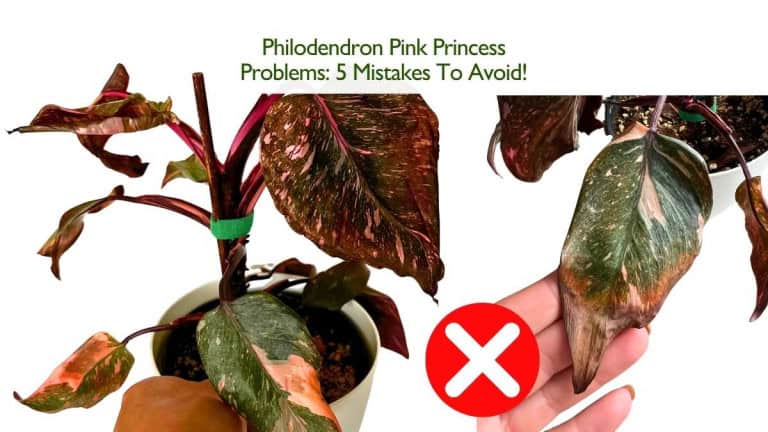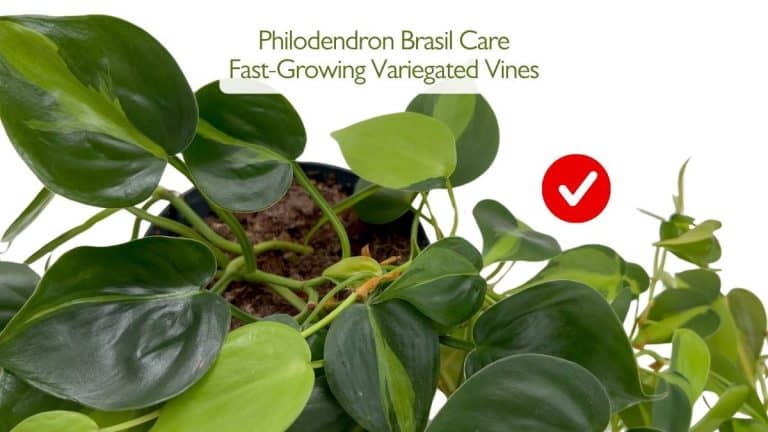Philodendron Pastazanum Care: The Complete Guide for Stunning Heart-Shaped Leaves
The Philodendron pastazanum, often called the “heart-leaf beauty”, is one of the most striking philodendrons with its large, glossy, heart-shaped leaves and deep veins that look almost sculpted. Native to the rainforests of Ecuador, this terrestrial aroid grows close to the forest floor, enjoying warmth, humidity, and rich organic soil.
Although it looks exotic, Philodendron pastazanum care is quite simple once you know its preferences. In this guide, I’ll show you how to recreate its natural environment indoors with the right light, watering, soil mix, and humidity – to help your Pastazanum grow strong, healthy, and absolutely stunning.
I’ve grown two for over a year now, and both have become massive statement plants – each one reacting differently to light, space, and support.
📹 If you love rare philodendrons, check out my video on Philodendron Gloriosum, similar heart-leaf types and how their care compares – perfect for collectors who want to expand their jungle:
Click here to watch the video on YouTube
Light Requirements for Philodendron Pastazanum
The Philodendron pastazanum thrives in bright, indirect light, similar to what it receives under the rainforest canopy. Too little light will cause smaller leaves and slower growth, while direct hot sunlight can easily scorch the delicate foliage.
I grow two Philodendron pastazanums, both placed in front of a south-facing window, but I introduced them to direct light slowly, starting in May. That gradual acclimation helped them adjust without leaf burn, and now they thrive with several hours of sunlight every day. The stronger light made a noticeable difference – the leaves became bigger, thicker, and more defined, with deep glossy veins that catch the light beautifully.
👉 If you can’t provide enough natural light, supplement with a full-spectrum grow light. Good light is essential for strong leaf development and overall success in Philodendron pastazanum care.
Watering Philodendron Pastazanum
This species prefers evenly moist soil – not too dry, not soggy. The key to watering success is balance. Let the top inch of soil dry out before watering again, and always make sure the pot has drainage holes.
In my experience, watering every 5–7 days in summer keeps it perfect, while in winter, every 10–12 days is enough. Overwatering can quickly lead to root rot because this philodendron has thick, sensitive roots.
Because mine sit in front of a sunny window, they dry out faster than most indoor philodendrons. I usually water when the top layer feels dry – sometimes every four days during hot spells. The key is to balance the stronger light with slightly more frequent watering, without letting the soil stay soggy.
💧 Pro Tip: Use filtered or rainwater when possible. Tap water with high mineral content can cause leaf spotting over time. If you want to stay consistent with your watering routine, try my Plant Watering Planner – it helps track patterns for all your rare philodendrons.
Best Soil for Philodendron Pastazanum Care
A loose, chunky mix is vital for healthy roots. Ordinary potting soil is too dense and can hold excess water. The perfect soil for Philodendron pastazanum care is an aroid mix that mimics its native habitat – rich, airy, and fast-draining. I have my own Soil-Free Aroid Mix recipe that I use for all of my aroid plants. If you’re interested in how I make it, read the article below – a full video guide is included.
Read more: How To Make Perfect Aroid Potting Mix (SOIL FREE) for Healthy and Thriving Aroids
I refresh the soil every spring, which prevents salt buildup from fertilizer and encourages new root growth. This small step makes a huge difference in long-term plant health. Always use a pot with drainage holes – even the best soil won’t help if excess water can’t escape.

Humidity and Temperature for Philodendron Pastazanum Care
The Philodendron pastazanum thrives in high humidity (60–80%) and steady warmth. These rainforest plants dislike dry air, which can cause leaf edges to brown.
Here’s what works well indoors:
- Keep temperatures between 68–82°F (20–28°C).
- Avoid cold drafts or sudden temperature drops.
- Use a humidifier or group plants together to raise humidity naturally.
I keep mine near a humidifier during winter to maintain healthy, glossy leaves. Consistent humidity is one of the biggest secrets to vibrant Philodendron pastazanum care.
Fertilizing Philodendron Pastazanum Care
Like many philodendrons, Pastazanum is a hungry grower. During spring and summer, feed every 2–3 weeks with a balanced liquid fertilizer diluted to half strength. Regular feeding helps maintain large, lush leaves and steady growth.
I often add a bit of organic fertilizer every few months to improve the soil life – it keeps the plant strong without chemical buildup. In fall and winter, reduce feeding to once a month or pause entirely.
👉 Remember, overfertilizing can lead to leaf burn or salt accumulation, so less is more. Consistent but gentle feeding is key in Philodendron pastazanum care.

Repotting and Growth Habit
The Pastazanum grows horizontally and prefers shallow, wide pots that allow its thick roots to spread. Repot every 1–2 years, or when the plant clearly outgrows its container.
When repotting, trim any damaged roots and replace the old mix completely. This refresh not only improves aeration but also prevents compaction – an important detail in Philodendron pastazanum care that keeps the root system thriving.
Interestingly, my two plants grow in completely different ways. One is staked on an artificial pole (image below) and refuses to crawl – it’s determined to grow upward, forming tall, strong petioles with large upright leaves. The other, planted in a wider pot, naturally crawls horizontally (image above) while also sending a few shoots upward. Both styles look impressive, and it shows how adaptable the Pastazanum can be – whether trained on a pole or left to sprawl, it adjusts beautifully to its space.

Common Problems with Philodendron Pastazanum
Most issues come from overwatering, low humidity, or insufficient light:
- Yellow leaves → Too much water or poor drainage.
- Brown edges → Dry air or inconsistent watering.
- Slow growth or small leaves → Not enough light or nutrients.
- Wilting leaves → Check for root rot or compacted soil.
Each of these problems can be corrected by adjusting one of the main care elements. I plan to publish a full article on Philodendron Pastazanum Problems & 5 Mistakes to Avoid, where I’ll explain these issues in detail and show how to bring your plant back to perfect health.
Propagation of Philodendron Pastazanum
The Philodendron pastazanum can be propagated through stem cuttings with nodes or by dividing larger plants. It’s a slow but deeply rewarding process, especially when you see the new growth emerge.
I started with one plant, but after some time, I decided to experiment. I cut the stem that was growing upward and planted it directly in a long, shallow pot filled with my custom aroid mix. The cutting took about two months to root and start growing, and now, eight months later, it has turned into a huge, thriving plant on its own.
The original mother plant, which was left with only one leaf after cutting, didn’t give up either – it kept growing upward and now has around ten large, healthy leaves. Both plants are impressive in size and show how resilient the Pastazanum can be when given the right care.
To propagate your own, make a clean cut below a node, plant the section in a well-draining aroid mix or moist sphagnum moss, and keep humidity high. Within a few weeks to a couple of months, you’ll see roots forming and new growth emerging.
Propagation takes patience, but it’s one of the most satisfying parts of Philodendron pastazanum care, proving how adaptable and strong this beautiful species truly is.
Related Topics
- Philodendron Prince of Orange Care
- Anthurium Clarinervium Care
- Philodendron Pink Princess – 5 Mistakes to avoid!
Final Thoughts on Philodendron Pastazanum Care
Caring for the Philodendron pastazanum is all about balance – bright light, moderate watering, rich soil, and consistent humidity. When those elements come together, this plant rewards you with spectacular heart-shaped leaves that get larger and more beautiful with each new growth.
It’s a plant that combines the drama of rare species with the reliability of easy-care philodendrons. Once you find its rhythm, you’ll see why so many collectors consider it a must-have in any indoor jungle.
My Philodendron Pastazanum Growth Journey
To give you a real example of how this plant develops over time, here are three short videos from my own collection.
You can see my Philodendron pastazanum from the day I brought it home, through its propagation phase, all the way to its current lush, mature form.
🎥 Watch my Shorts below:
Explore More Music for Your Plants & Stay Connected!
Check out my Playlist: Music for Plants and find the perfect tunes to help your plants and yourself thrive.
Don’t forget to visit my YouTube Channel Plant House & Garden and subscribe — your support means the world to me!
Connect with me on social media for more plant care tips and music updates: Instagram | Facebook | X | Pinterest | Reddit | TikTok
Love plants? Love music? Don’t miss out on new updates — hit subscribe and follow now to keep your plants happy and your space vibrant!







